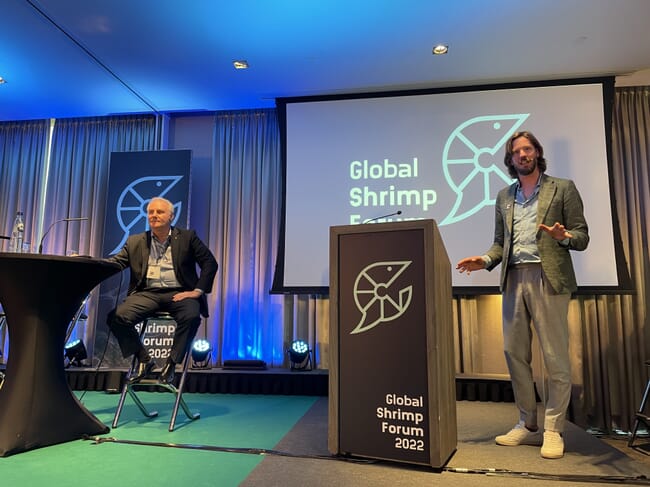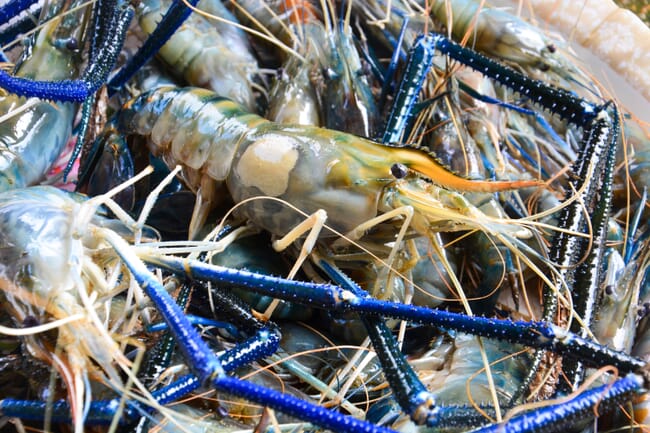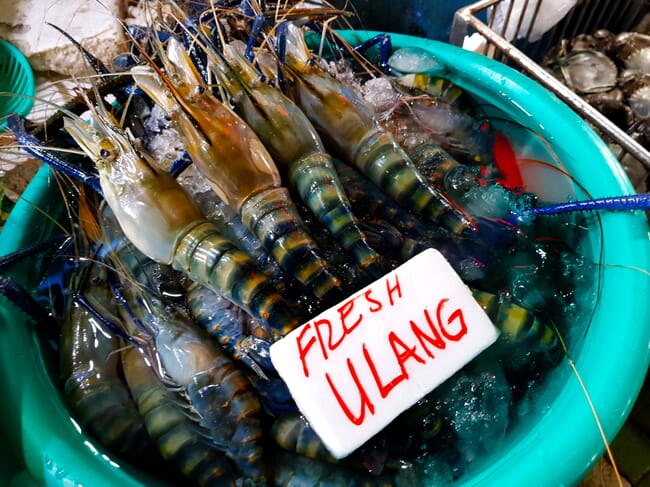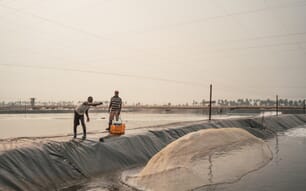
So argued Glen Illing, a partner at AquaWoo, who gave a talk on the species at the recent Global Shrimp Forum in Utrecht.
According to Illing, the reasons for the current stagnation of the giant river prawn sector include the comparatively low profitability of the species compared to monodon and vannamei shrimp.
“The species is grown at relatively low stocking densities, often as a secondary crop and – quite frankly – the second choice for cultivation, favoured in the main by small subsistence farmers. If profitability can be improved, farming freshwater shrimp will increase and this is where genetics can play a part,” he reflected.
“Genetic improvement is synonymous with efficiency, profitability and resilience to diseases,” he added. “But it baffles me why it’s so poorly applied to a species with as much potential as the giant freshwater prawn and yet it’s been applied to other species such as vannamei, where there have been massive jumps and improvements since the year 2000.”
This is even more surprising as, according to Illing, researchers have laid some of the vital groundwork.
“There have been some notable [breeding] programmes and also some great research projects, but they haven’t been integrated into mainstream giant freshwater prawn production,” he observed.
“There are woefully few breeding programmes that are actually applying genomics to giant freshwater prawns,” he added.
Although there have been a handful of successful breeding programmes in countries including Indonesia, China, Vietnam, Thailand and India, Illing noted that the generation-on-generation benefits have since slowed down, largely due to issues caused by inbreeding.

Single-sex stocks
One development that Illing sees as having great potential is the use of genomics to produce all-male and all-female stocks – the former are grown to large sizes over long cycles in order to compete with the lobster market, while the latter can produce three cycles a year.
“Both gender-focused programmes increase profitability over a mixed sex cultivation, and both can be used in polyculture with vannamei or with fish like tilapia,” he said.
“Relatively large proportions of freshwater prawn farmers are beginning to cultivate all-males, particularly in Thailand… on the other hand the all-female revolution is taking longer to reach wide-scale production, this technology is currently patent protected and being developed exclusively by one company [Enzootic],” he explained.
Most recently, Illing argues, the rise of gene editing “can bypass most of the backbreaking quantitative genetics work” and “will come much quicker than people imagine”. And he pointed to a number of breakthrough technologies, including one at Ben Gurion University that developed “platforms that have been geared up specifically to have the ability to edit freshwater prawns”.
Enzootic’s all-female production
Illing then focused on the all-female giant river prawn production work being done by Enzootic. While the company is based in Israel, they have recently built a compact, vertical RAS hatchery, with the capacity to produce 450 million giant river prawns per year, near Bangkok – one of the main giant freshwater prawn production areas. Here they’re grown to juvenile size before being shipped to farmers.
“The crux of all-female production is the ability to increase the stocking rates in ponds or tanks to economic densities and yet obtain a desirable market size within four months to enable three cycles per year and maximise the farmers’ yields. Operating at an economic density is key – too high and the management challenges are insurmountable, too low the yields would not economically justify the costs,” Illing observed.
Trials undertaken by the company are set to establish the best stocking densities in commercial farms shortly. But Illing also pointed to the results of a tank-based trial undertaken by the Asian Institute of Technology (AIT) found that optimum yields were around 24 giant river prawns per square metre, whereas the fastest growth rate occurred at 8 prawns per square metre – up from the 4 per square metre favoured in traditional farms.

© Gregg Yan
The next question Illing would like to see answered is whether the results of these tank-based trials are substantiated in commercial pond production of all-female production.
And, in order to speed up the process and encourage buy-in from farmers, Enzootic has established a large-scale commercial farm to the east of Bangkok, consisting of 55 earthen ponds across 100 ha. The first harvest from these is due soon, he noted.
The company is now also going further down the vertical integration route by developing a branded product – which is being tested in the high end retail market in Canada.








